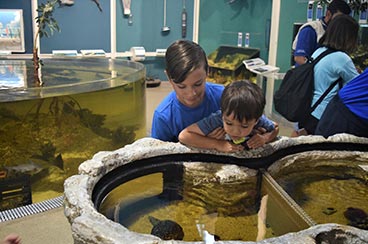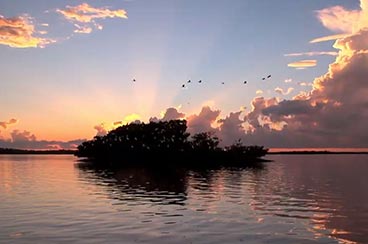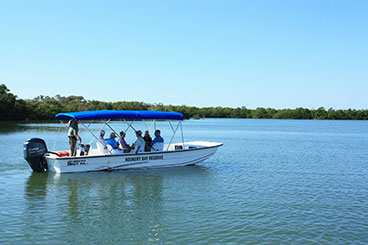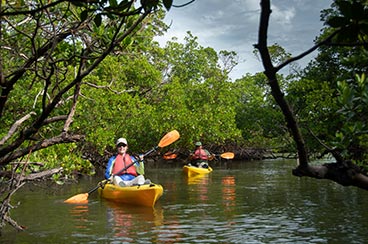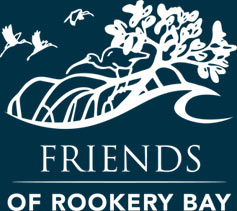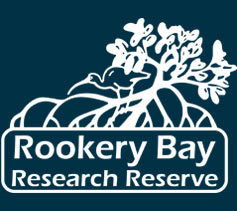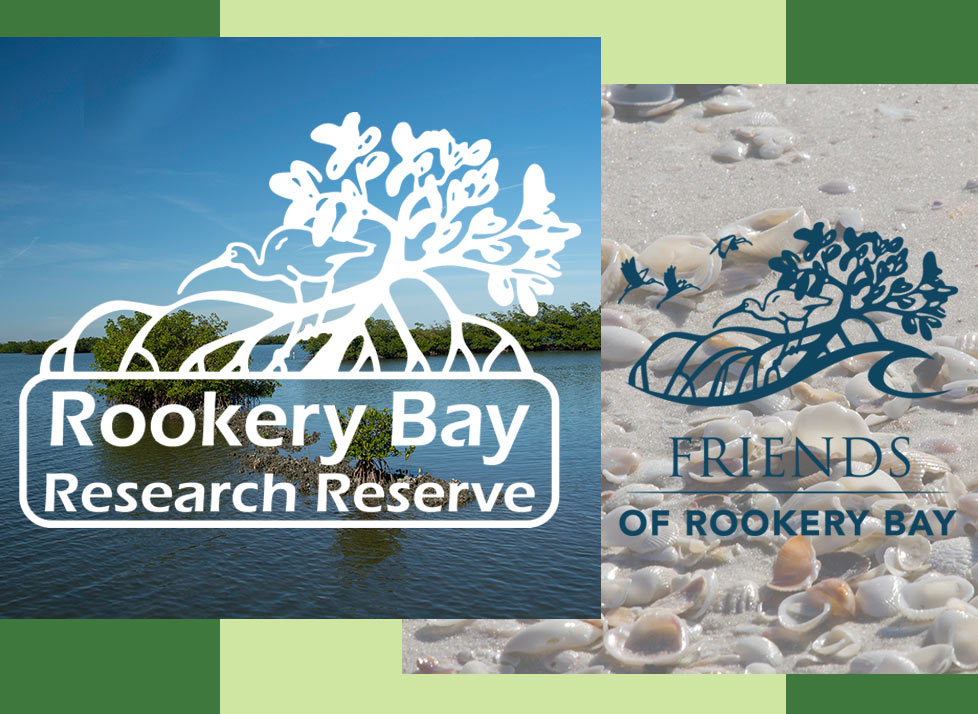EXPLORE THE OPPORTUNITIES
Possible causes of any habitat change will be studied. The Reserve used aerial imagery of the entire Reserve and field surveys of a portion of the Reserve to determine the types of habitats present. Monitoring equipment will be installed to measure changes in sea level, tides, sediment level, and ground water and soil characteristics. In addition, vegetation monitoring will be conducted annually at select sites.
Possible causes of any habitat change will be studied. The Reserve used aerial imagery of the entire Reserve and field surveys of a portion of the Reserve to determine the types of habitats present. Monitoring equipment will be installed to measure changes in sea level, tides, sediment level, and ground water and soil characteristics. In addition, vegetation monitoring will be conducted annually at select sites.
In response to a call for help from the waters in or around the Rookery Bay Reserve, FWC contacts staff at Rookery Bay to verify the report (floating objects are sometimes misidentified), the precise location, and the nature of the injury or perceived illness. They often stay with the animal until more help is able to arrive on the scene, assist with or provide transportation to Miami Seaquarium or Lowery Park Zoo for rehabilitation, and are sometimes even on-hand to assist with the animal’s subsequent release back into the same waters from where it was rescued. To report a marine mammal in distress, call the Marine Mammal Stranding hotline at 888-404-FWCC (3922).
The “Dolphin & Whale 911” app (for both Apple and Android users) enables the public in the Southeast U.S. to immediately report live or dead stranded, injured, or entangled marine mammals by connecting them to the nearest stranding response hotline. The “SEE & ID Dolphins & Whales” app (for both Apple and Android users) is an electronic field guide that assists the public in identifying marine mammals in the Southeast U.S. and provide species information, such as physical description, biology, habitat, conservation/status and photos. The app also informs that public of appropriate ways to enjoy viewing marine mammals in the wild without harming or harassing them.
Fire is a process of rejuvenation. Some benefits of fire include replenishing nutrients in the soil, reducing natural fuel loads (downed limbs and dead leaves), stimulation of seed production, and maintenance of natural plant communities that benefit native wildlife. Although plants look pretty scorched after a fire, they resprout in a matter of weeks. Even during this time of blackness, beauty is everywhere, and wildlife is taking advantage of newly-available food resources.
Land management through prescribed fire is a beneficial method of maintaining suitable habitat for native wildlife. Research and monitoring of these management actions are important in assessing the success of fire management strategies. In the past, fire suppression on Reserve lands greatly increased fuel levels, or the amount of dead or dried leaves and branches that could easily be ignited under proper conditions. Currently the Reserve has an active prescribed fire program using trained staff and trained personnel from partner agencies.
A major portion of Collier County is comprised of plants that are dependent on fire to maintain species composition and diversity. These species are the same as those that are prone to lightning-strike wildfires and the controlled reduction of those fuels will prevent catastrophic wildfire damage. Fire-dependent plants include the South Florida slash pine, gallberry, saw palmetto and scrub oaks.
- Reduction of fuel load to decrease threat of wildfires;
- Stimulation of food and seed production
- Opening areas for wildlife feeding and travel;
- Ecosystem diversity;
- Enhanced endangered and threatened species habitat; and
- Invasive plant control.
If you have questions or concerns about smoke in your area, please contact the Florida Forest Service at 239-690-8001.
- Ocean
- Conservation
- Education
- Action
- Network
Team OCEAN is a highly trained and dedicated group of volunteers with a main mission of outreach and education. For many visitors, the only chance to learn about the local environment and the reserve itself is through these volunteers. Most of their activity is boat based, allow them to interact with people in many different areas of the reserve including the ecologically diverse and important barrier islands. In 2019 Team OCEAN members recorded over 9,000 visitor contacts and 6,000 hours of volunteer work.
In 2017 their efforts were rewarded with Audubon of Florida’s prestigious Guy Bradly Award.
MAKE A DIFFERENCE
Become a Friend of Rookery Bay
Support this amazing and important ecosystem today and know that your impact will be felt for generations to come.

